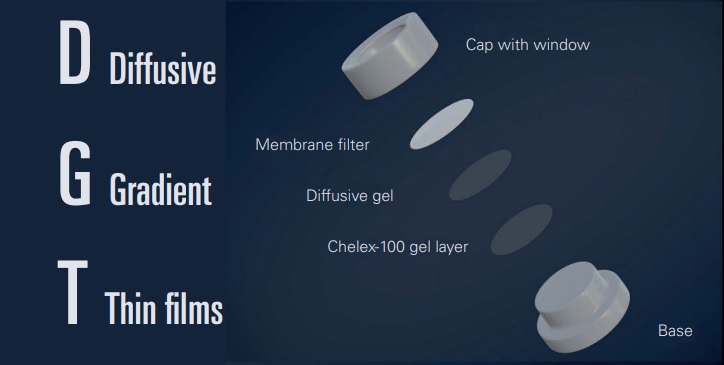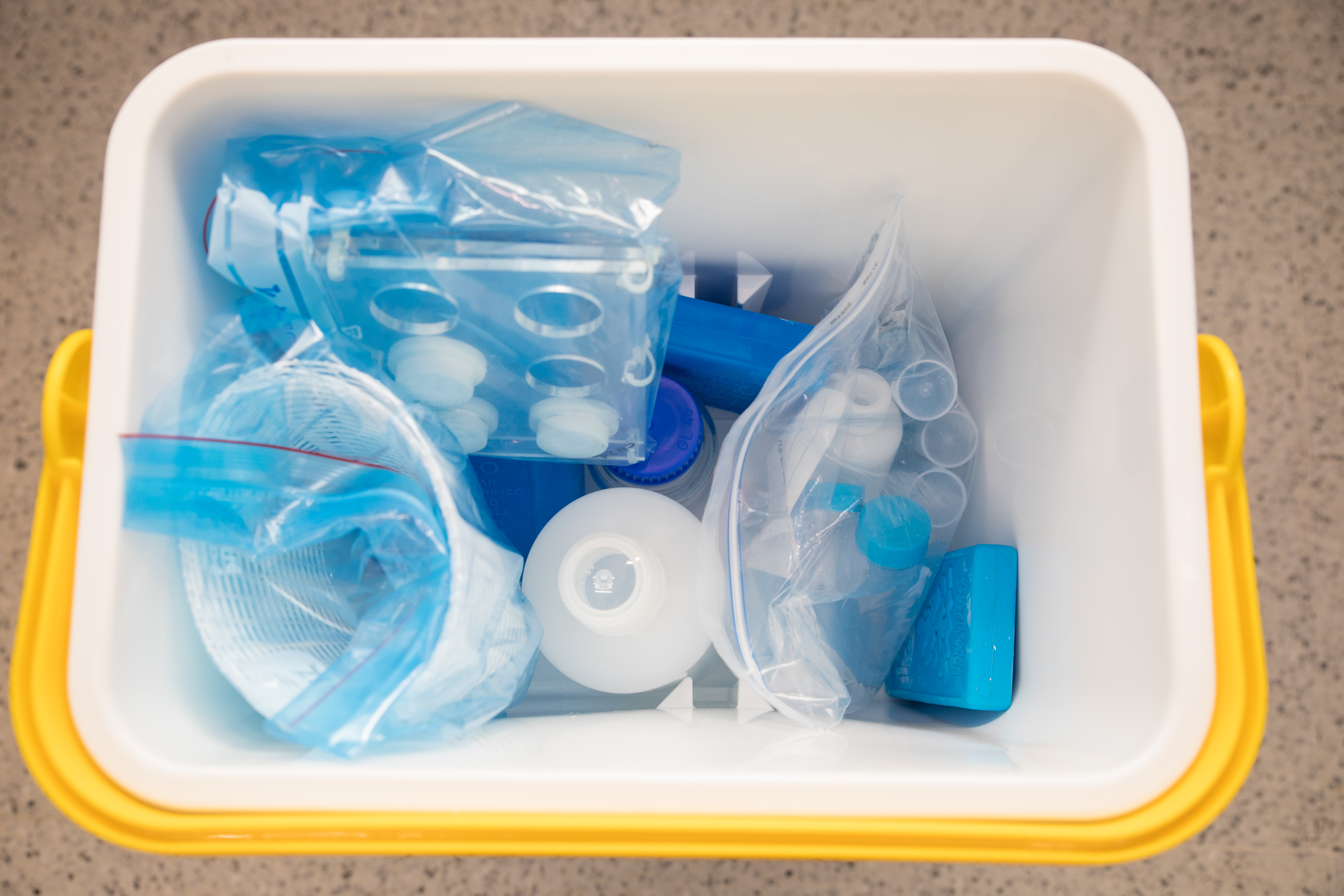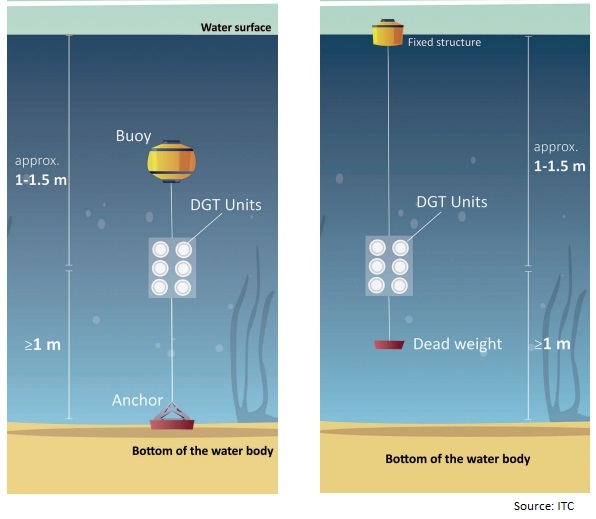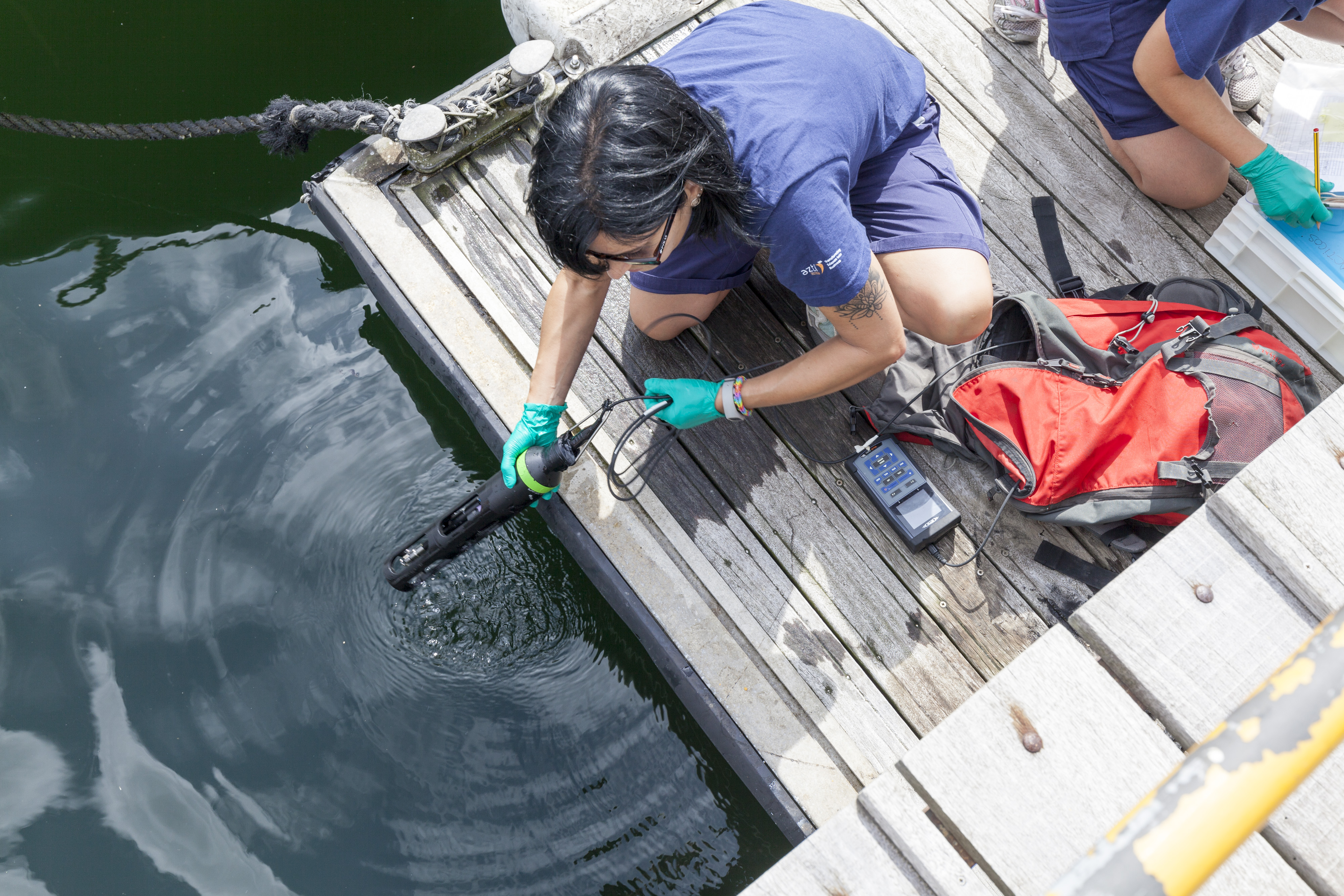This section is focused on the piston-type DGTs used for analysis of waters (or solutions).
- What does DGT mean? ?
DGT stands for Diffusive Gradient in Thin films.
- What is a DGT? ?
DGT is a simple and robust Teflon device that accumulates dissolved elements or compounds in a controlled way, providing the in-situ concentration during the time of deployment.
Analysis of the accumulated elements or compounds is performed after retrieval in the laboratory.

- What is its basic principle? ?
A controlled diffusion gradient is established and the elements or compounds of interest pass through the membrane filter and diffusive gel and are bound/accumulated in the binding gel.
From the amount bound measured in the gel, a standard DGT equation can be used to calculate the time-weighted average (TWA) concentration in water over the deployment period.
- What analytes can be measured with the DGTs? ?
By using different types of filter membranes, diffusive gels and binding layers, a wide range of analytes can be determined such as cationic metals, anionic/neutral-oxyanionic metals and organic substances.
- Where to get DGTs? ?
These DGT devices are provided by DGT® Research Ltd (Lancaster, UK) at: https://www.dgtresearch.com
- What type of DGT is the most used for cations? ?
Most cations are best measured with DGT passive samplers that incorporate Chelex resin in the binding layer, such as the standard DGT passive samplers for cations (LSNM-NP type). For deployments in all types of waters the LSNM-NP device is recommended.
- How complex is to use de DGTs for field deployment? ?
The use of DGTs is not complex but requires certain care to avoid cross-contamination and minimal training to handle the devices before and after its deployment.
- What material is necessary when using DGTs? ?
The material required can usually be found in any environmental laboratory or, failing that, can be obtained without difficulty. This material is detailed as well as the cleaned process in the suggested readings and references.

- Where DGTs should be deployed in water? ?
The optimal location of DGT depends on the objective of the study and the homogeneity of the water column. DGT can be deployed from 1 or 2 m sub surface to 1 or 2 meters from the bottom. When determining the depth of immersion of DGTs, the variation in water height with the tide should be taken into account, avoiding exposure of the DGTs to air and to contact with bottom sediment. The easiest deployment system consists of the use of moorings, buoys or other fixed structures.

- How long DGTs should be deployed in water? ?
Deployment times are usually between 7 to 10 days in coastal waters and estuaries. This time can be adjusted according to the environment in which the DGT are used, from 3 days for heavily contaminated sites to about 15 days for very lightly contaminated sites. Other factors to consider when establishing the deployment time include the presence of competitive ions and the likelihood of biofilm formation.
- Is it necessary to record other physicochemical parameters in the water? ?
In addition to deployment time (date, time of deployment and retrieval), water temperature and salinity must be measured at deployment and retrieval times. In addition, the depth of deployment dissolved oxygen and saturation (mg/L and %, respectively) can be measured.

- How are DGTs disassembled after their retrieval? ?
DGT devices can be stored in well controlled conditions until they are analysed (for no longer than 2 weeks). The DGT disassembly process and taking only the thin binding gel layer requires some previous experience and must be carried out in a clean environment. The entire process is described in detail in the suggested reading and references and the tutorial videos.

- Which equipment is necessary to analyse metals in DGT eluates? ?
Trace metal analysis in DGT eluates requires highly sensitive analytical equipment. Inductively Coupled Plasma Mass Spectrometry (ICP-MS) is the recommended method in order to achieve the lowest limits of quantification (concentrations in the range of ng/L).
- How to determinate concentration in marine water from the DGT-eluate concentration? ?
Calculations are made in two steps:
I. Calculate the mass of metal (M), in g, accumulated in the resin gel layer using the following equation:
M = Ce * (V HNO3 + Vgel) / fe
where:
- Ce is the concentration of metals, in g/L, in the 1M HNO3 elution solution
- VHNO3 is the volume of HNO3 added to the resin gel
- Vgel is the volume of the resin gel (typically 0.15 ml)
- fe is the elution factor for each metal (typically 0.8)
II. Calculate the concentration of metal in water, in g/L, measured by DGT device (CDGT) using the following equation:
CDGT = (M * Δg) / (D * t * A)
where:
- Δg is the thickness, in cm, of the diffusive gel plus the thickness of the filter membrane (both data are included in the original DGT packaging)
- D is the diffusion coefficient of metal in the gel (tabulated value in: https://www.dgtresearch.com/diffusion-coefficients/
- t is deployment time (in seconds)
- A is the exposure area (window size): 3.14 cm2 (included in the original DGT packaging)
- Monitool project laboratories which analyse DGTs ?
- What applications the use of DGTs have? ?
Among other possible applications, DGTs can be used to:
- Water Framework and Marine Strategy Framework Directives compliance*.
- Monitoring/surveillance programs in coastal zones.
- Monitoring/surveillance programs in outfalls and wastewater discharges.
- Identification of pollution sources (ISO 5667-23).
- Metal screening in aquatic areas affected by pollutions.
- Metal contamination monitoring for one or more specific contaminants (example: Cd, Ni, Pb, Cu, Al, etc.)
- Early detection of trends in pollutant concentrations for decision making.
- Risk Assessments.
- Evaluation of the effects of corrective actions aimed at reducing pollutant emissions.
- Impact studies.
- Biofouling rate assessments.
- etc.
* MONITOOL project provides data for the existing water EQS adaptation to EQS-DGT in order to promote the use of DGT in the chemical status assessment of water bodies under these Directives.



